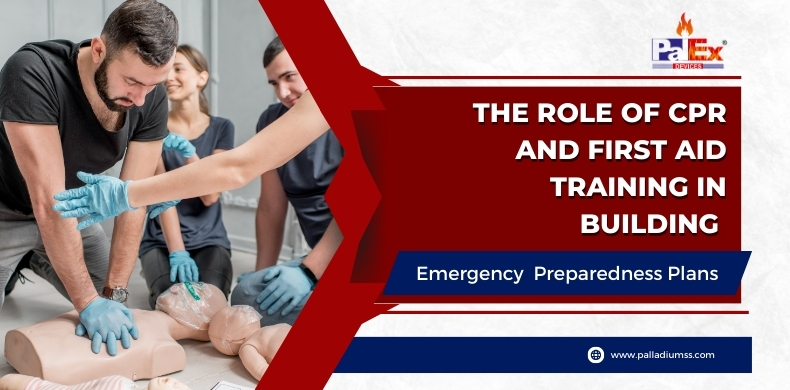In this uncertain world, it is no longer a luxury but a requirement to be ready for emergencies. No matter if one is managing business, school or family affairs – having an all-inclusive emergency preparedness blueprint becomes essential. The most crucial element of any successful plan involves CPR and initial aid training.
The Importance of Emergency Preparedness
Emergencies do not make appointments, they occur unexpectedly. They can happen due to various reasons such as natural disasters or sudden medical situations. When an emergency situation occurs and you are not prepared for it, the outcome may be filled with disorderliness, harm or even loss of life. A plan for emergency readiness is like a map which helps individuals and groups to navigate through these initial crucial moments when disaster strikes.
Though factors such as evacuation paths, ways of communication and supply storage are important, the human touch – particularly being able to offer direct life-saving help – frequently makes distinction between a controlled crisis and a disaster.
The Power of CPR and First Aid Training
Cardiopulmonary Resuscitation (CPR) and first aid, they are not only medical procedures but life skills. If someone does CPR correctly, it can increase a person’s chance of surviving heart stoppage or cardiac arrest by two to three times. First aid abilities have the capability to stabilize an injury, stop it from getting worse, and provide time until professional medical assistance is available.
Incorporating CPR and first aid training into your emergency exit preparedness plan offers numerous benefits:
- When there is an emergency, time matters a lot. If people are trained in CPR and first aid, they can start life-saving actions right away – not having to wait for emergency services to come.
- Knowledge brings strength, particularly in demanding circumstances. People who have received education are probably going to stay composed and do the right thing when faced with an urgent situation.
- From situations where someone is choking, having an allergic reaction or experiencing burns and fractures, training in CPR and first aid helps people to deal with various medical emergencies.
- At a job or community place, learning CPR and first aid together in groups could be seen as good team-building activity that helps to create feelings of joint responsibility.
- Many places have rules that say it’s not only a good idea, but also required by law to have trained people and correct emergency plans in place.
Also read : The Role of Fire Hose Pipes in Urban Firefighting
Integrating CPR and First Aid into Your Emergency Plan
For the successful integration of CPR and first aid training into an emergency preparedness plan, follow these main steps:
- Consider your situation, thinking about things like how big your group or community is, what activities you do and if there are any special dangers that could make it harder to cope with emergencies.
- Search for programs that have endorsements from well-known and trusted organizations like the American Heart Association or Red Cross.
- Plan a timetable for the first training and re-certification process. A lot of specialists suggest taking refreshment classes every two years.
- Have necessary first aid items and make sure everyone knows where they are kept.
- Make simple instructions for different emergency situations, showing who has to do what actions, like who will give CPR or first aid.
- Keep doing it repeatedly. Frequent emergency exercises where you include CPR and first aid situations can assist in strengthening practice and recognizing places that need enhancement.
- Make a setting that appreciates safety and readiness, possibly by giving rewards or acknowledgment to those who finish training.
Overcoming Common Obstacles
Although there are clear advantages, some groups may be reluctant to include CPR and first aid practice as part of their emergency designs. Usual worries can be about the cost, time requirements, and responsibility problems. Yet the ability to rescue lives is more important than these thoughts. Group rates for training are commonly provided by numerous organizations, while Good Samaritan laws in various jurisdictions ensure protection to people who sincerely offer emergency help.
The Ripple Effect of Preparedness
The effect of adding CPR and first aid training to your emergency readiness scheme goes beyond just for your organization or local area. People who have been taught to do these tasks keep their skills with them no matter where they are, which spreads a wave of readiness that could help society in general.
Picture a scenario where a big part of the population is educated in these crucial abilities. The possibility for good results in emergency circumstances would rise by leaps and bounds. Each trained person becomes possibly a life-rescuer, not only at their work or study place but also in any situation they face.
Also read : Fire Safety and Evacuation Plan
Conclusion: A Cornerstone of True Preparedness
In the field of emergency readiness, understanding is really power. CPR and first aid education give people the ability to take instant action that saves life at crucial times when it counts most. Including these abilities in your plan for being ready in emergencies, you are not only ticking off a requirement—you are building up an effective system that can respond well and help significantly during crisis situations.



